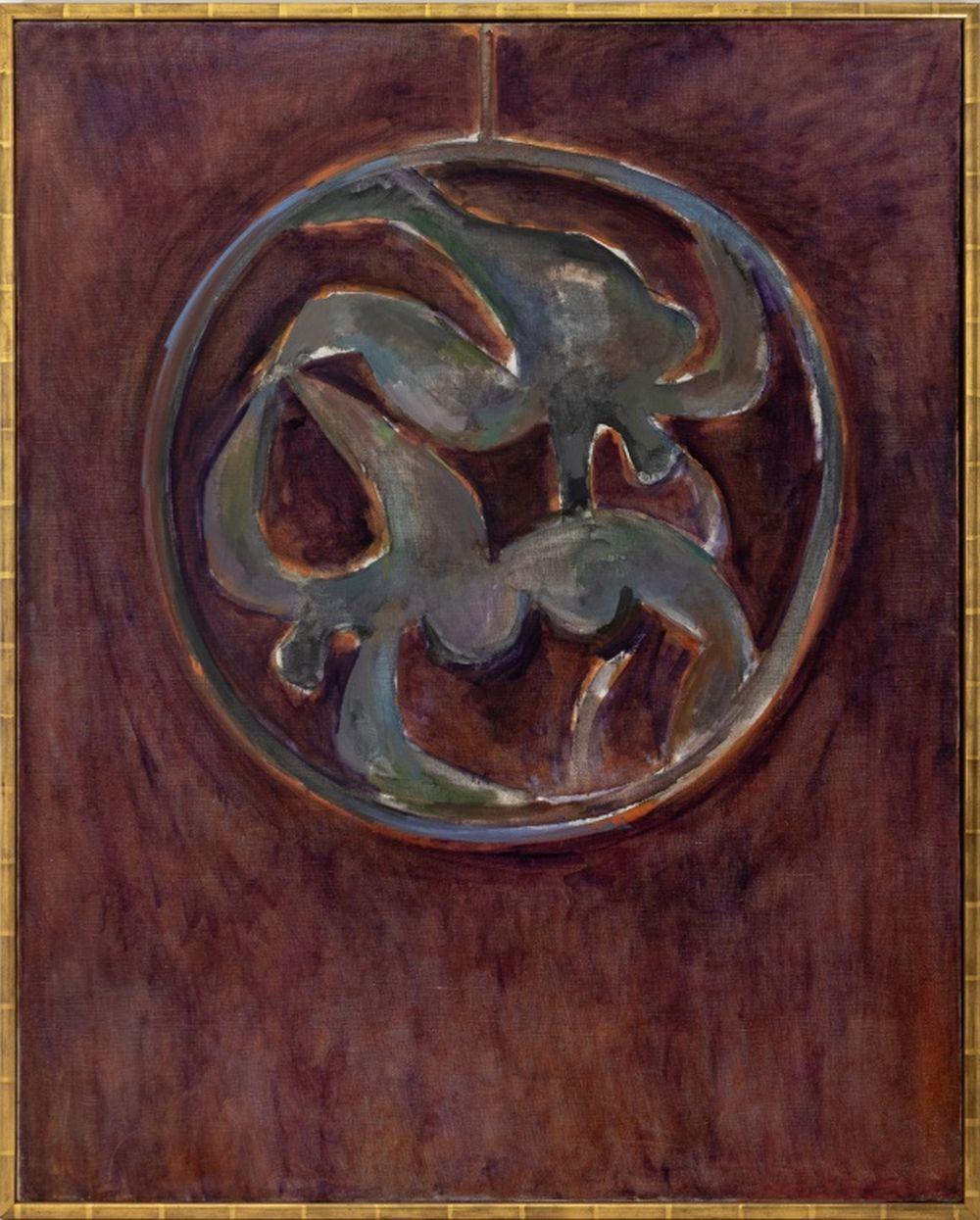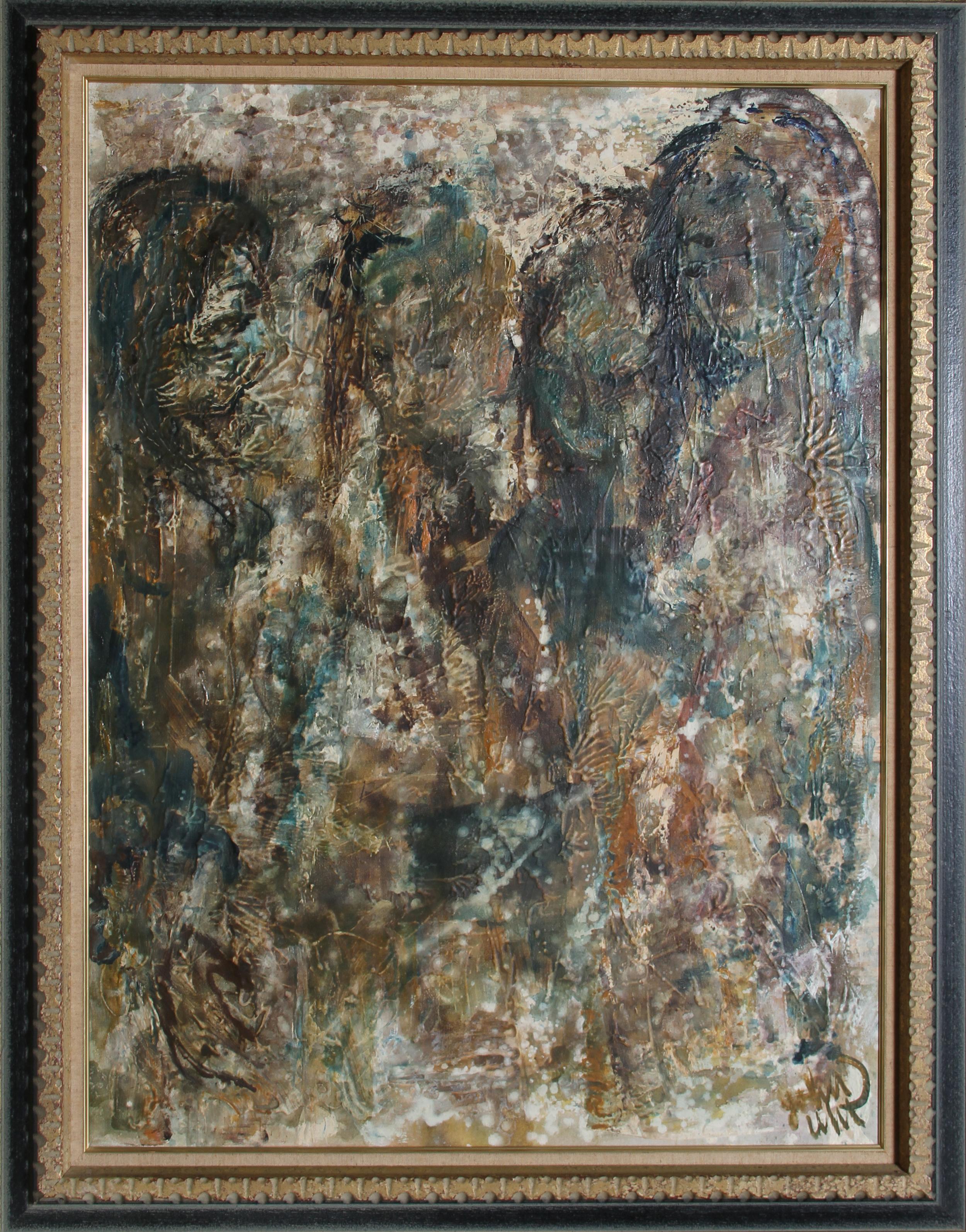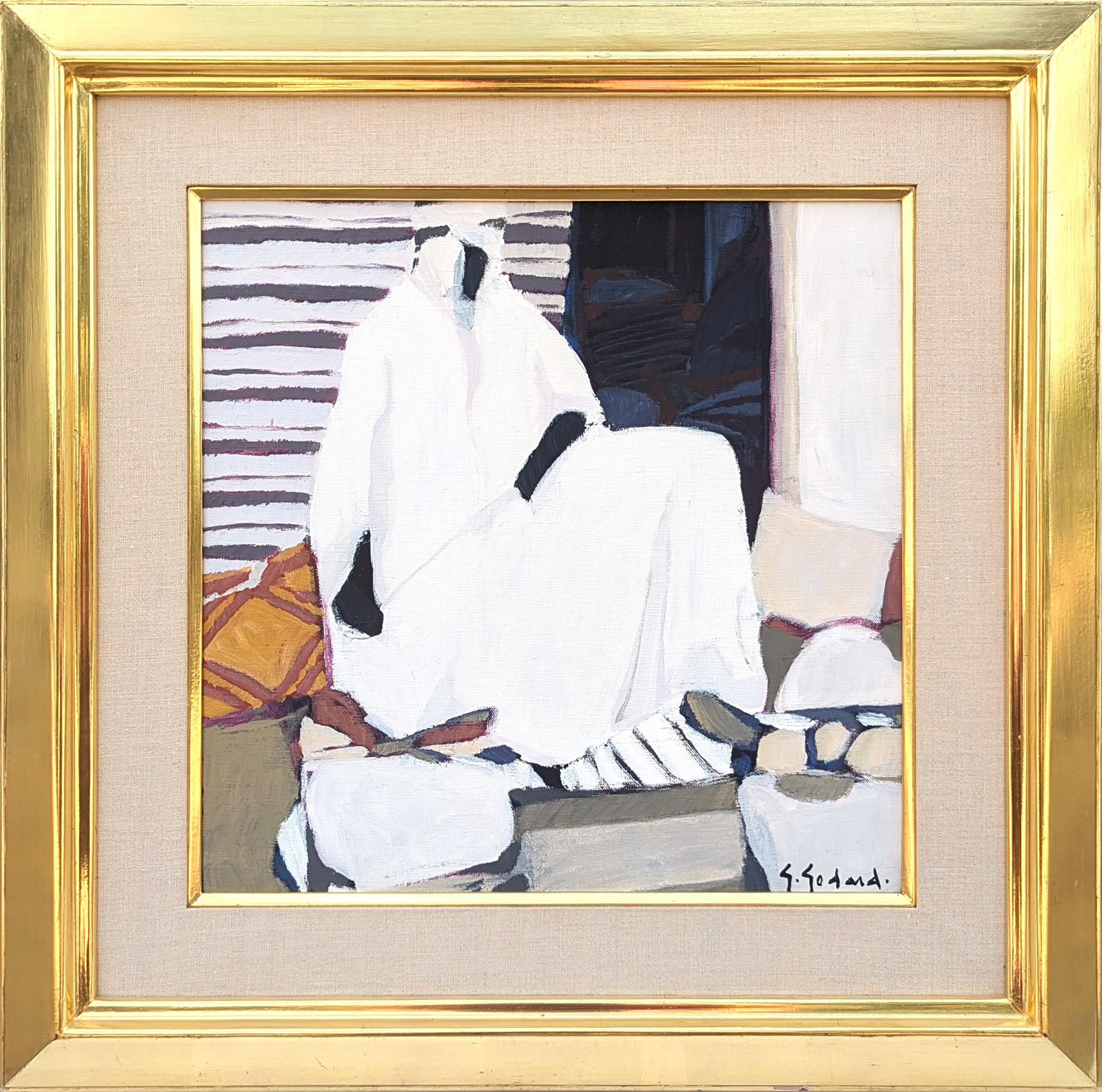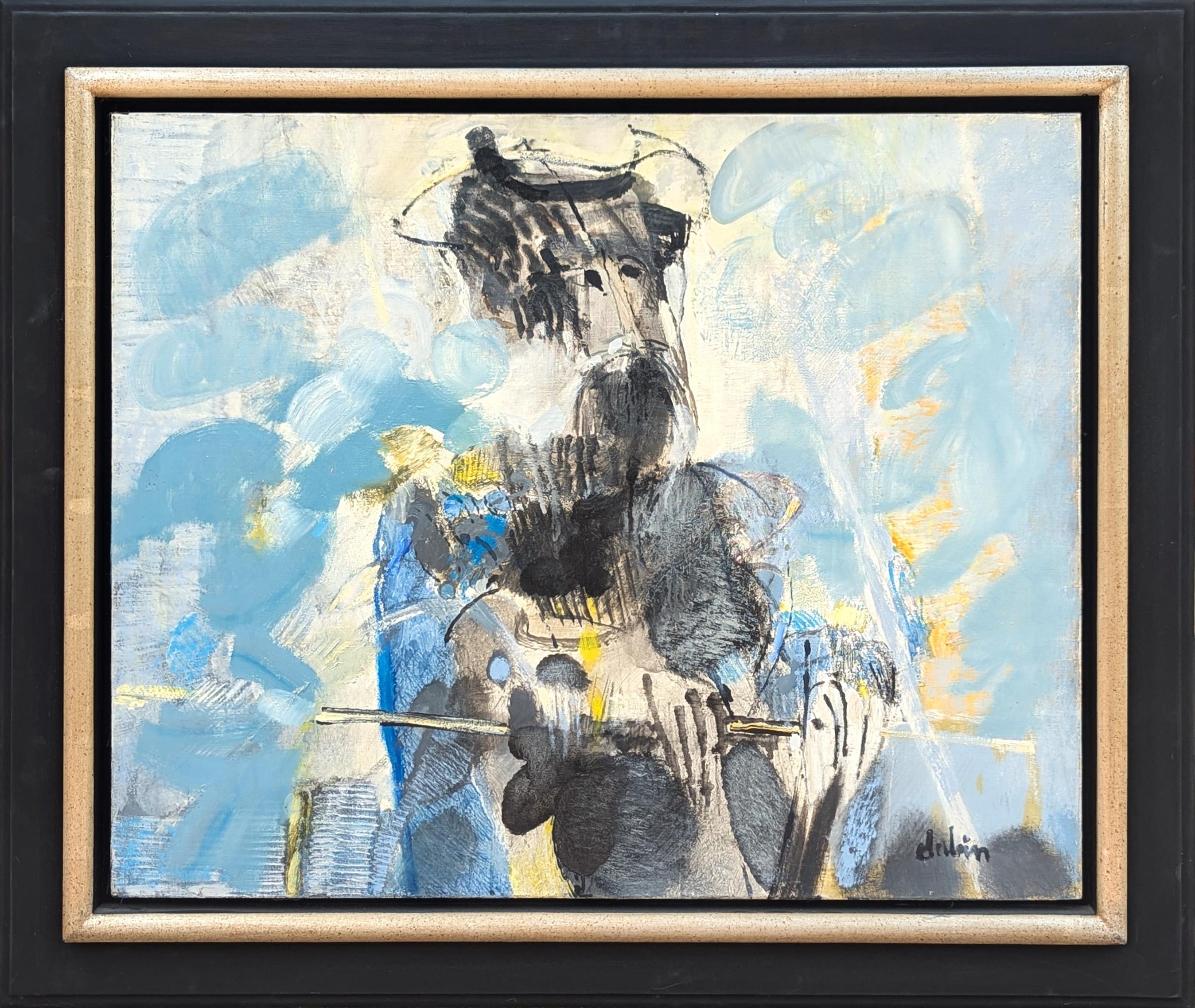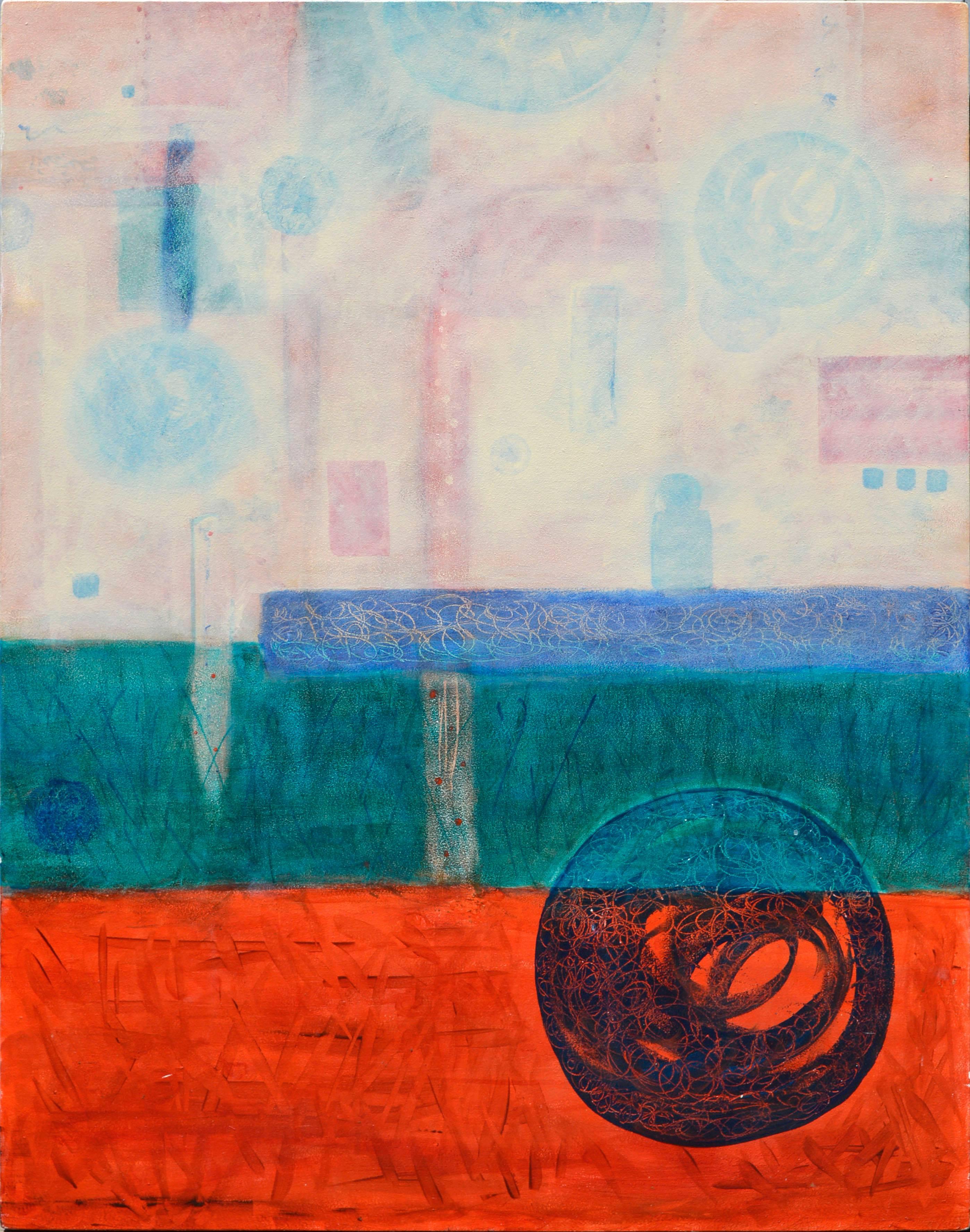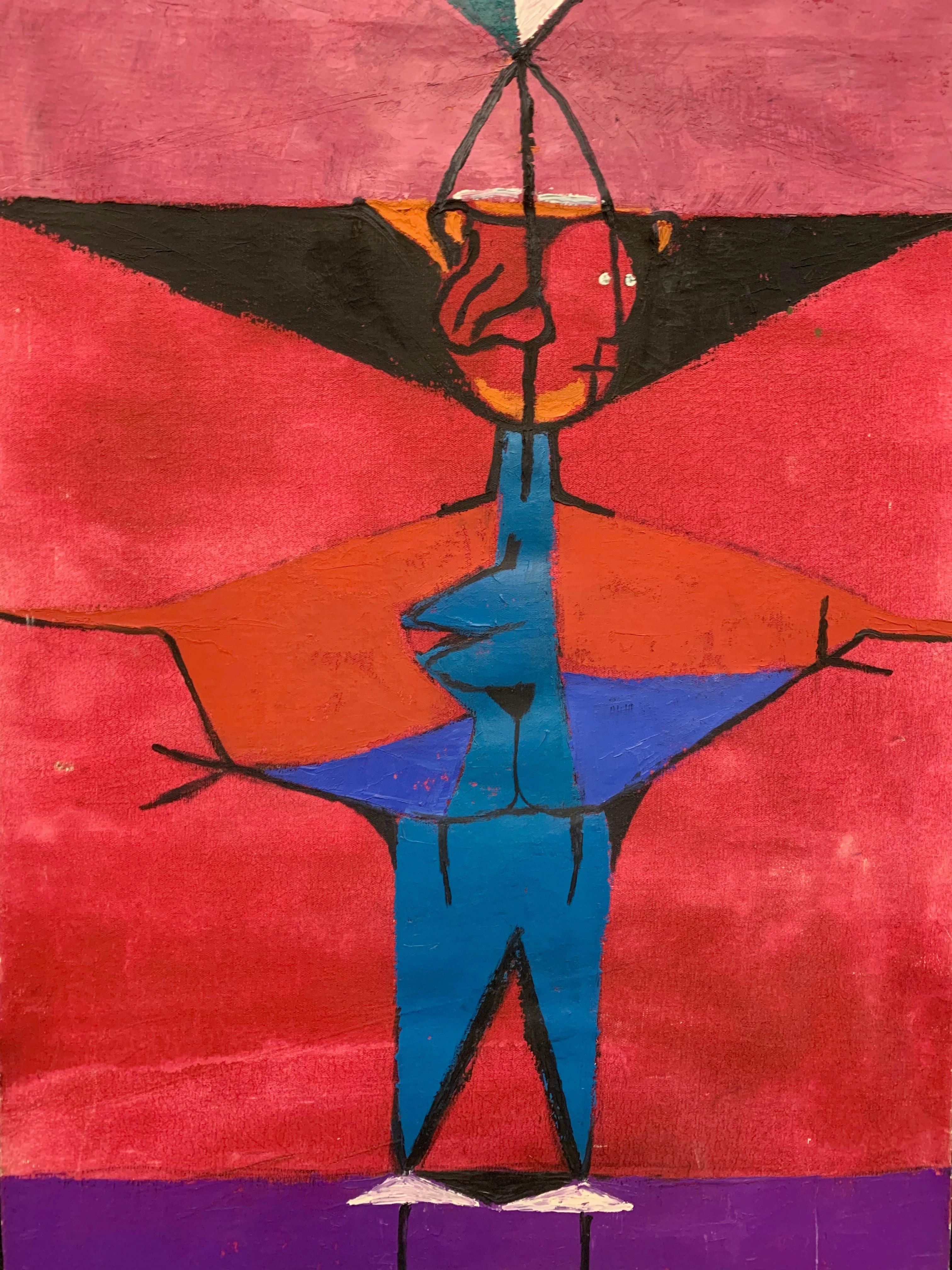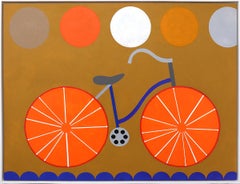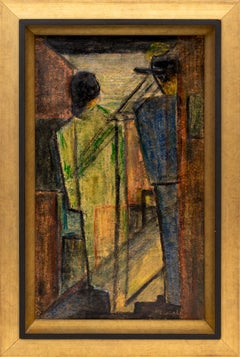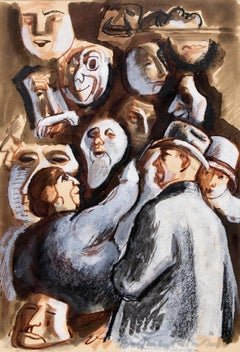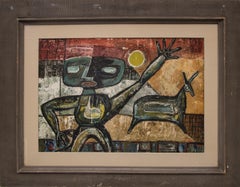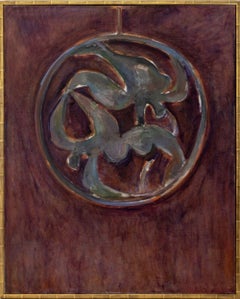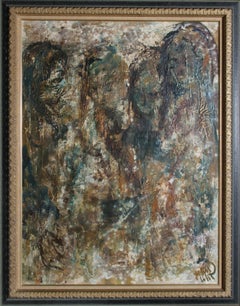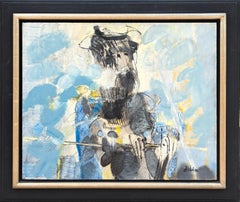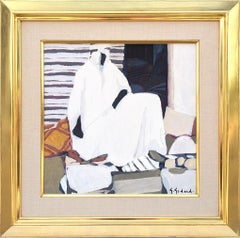Items Similar to 1940s Modernist Geometric Oil Painting 'Basic Form Problem' Red, Yellow, Blue
Video Loading
Want more images or videos?
Request additional images or videos from the seller
1 of 14
1940s Modernist Geometric Oil Painting 'Basic Form Problem' Red, Yellow, Bluecirca 1940
circa 1940
$2,250
£1,705.56
€1,991.41
CA$3,151.61
A$3,547.69
CHF 1,877.14
MX$44,004.72
NOK 23,190.62
SEK 22,179.78
DKK 14,856.91
Shipping
Retrieving quote...The 1stDibs Promise:
Authenticity Guarantee,
Money-Back Guarantee,
24-Hour Cancellation
About the Item
This captivating oil on paper geometric painting, created by renowned 20th-century artist Ralph Anderson, showcases a bold composition in rich shades of purple, red, and blue. Anderson's modernist approach to abstraction is evident in the dynamic interplay of color and form, making this piece a striking example of mid-century geometric art. The artwork is expertly presented in a custom hardwood frame, crafted with archival materials to ensure long-lasting protection and preservation of the piece. The outer dimensions of the framed artwork measure 28 ½ x 22 ½ x 1 inches, making it a substantial and eye-catching addition to any collection.
This painting is in very good vintage condition, reflecting the quality and care of its creation. For a complete and detailed condition report, please feel free to contact us directly.
We offer both expedited and international shipping options to ensure your artwork arrives safely and promptly. Please contact us for a personalized shipping quote tailored to your location.
- Attributed to:Ralph Anderson (1929, American)
- Creation Year:circa 1940
- Dimensions:Height: 28.25 in (71.76 cm)Width: 22.5 in (57.15 cm)Depth: 1.25 in (3.18 cm)
- Medium:
- Movement & Style:
- Period:
- Condition:Very good vintage condition. Detailed condition report is available upon request.
- Gallery Location:Denver, CO
- Reference Number:Seller: 214071stDibs: LU27310303882
About the Seller
5.0
Vetted Professional Seller
Every seller passes strict standards for authenticity and reliability
Established in 1979
1stDibs seller since 2013
287 sales on 1stDibs
Typical response time: 7 hours
- ShippingRetrieving quote...Shipping from: Denver, CO
- Return Policy
Authenticity Guarantee
In the unlikely event there’s an issue with an item’s authenticity, contact us within 1 year for a full refund. DetailsMoney-Back Guarantee
If your item is not as described, is damaged in transit, or does not arrive, contact us within 7 days for a full refund. Details24-Hour Cancellation
You have a 24-hour grace period in which to reconsider your purchase, with no questions asked.Vetted Professional Sellers
Our world-class sellers must adhere to strict standards for service and quality, maintaining the integrity of our listings.Price-Match Guarantee
If you find that a seller listed the same item for a lower price elsewhere, we’ll match it.Trusted Global Delivery
Our best-in-class carrier network provides specialized shipping options worldwide, including custom delivery.More From This Seller
View AllLarge 1960s Modernist Bicycle Oil Painting by Mary Chenoweth – Postmodern Art
Located in Denver, CO
This striking large-format oil painting on canvas by renowned 20th-century Colorado artist Mary Chenoweth dates to the 1960s and exemplifies the bold sp...
Category
Mid-20th Century Modern Abstract Paintings
Materials
Oil, Canvas
1970s Abstract Figurative Oil Painting – Modernist City Scene With Couple
Located in Denver, CO
Artist: George Cecil Carter (1908–1993)
Medium: Oil on board
Size: Image: 16 ⅞ x 9 ⅞ in Framed: 20 ⅝ x 13 ½ x 1 ⅞ in
Style: Mid-Century Modern, Abstract Figurative
This striking 1950s oil painting by celebrated Colorado abstract expressionist George Cecil Carter presents a modernist portrayal of a couple, believed to depict Alfred Stieglitz and Georgia O’Keeffe. Rendered in bold brushstrokes and a rich color palette, the piece showcases Carter’s unique ability to merge abstraction with figurative expression, creating a sense of movement and emotion.
Housed in a custom frame, this original mid-century artwork is a must-have for collectors of modernist and abstract figurative art.
Provenance:
From a private collection in Denver, Colorado.
About the Artist – George Cecil Carter
Born in Oklahoma in 1908, Carter became a leading figure in Colorado’s abstract expressionist movement, working alongside artists like Al Wynne, Mary Chenoweth...
Category
1950s American Modern Figurative Paintings
Materials
Oil
Vendor of Masks, 1930s Original Modernist Gouache Painting of Carnival Scene
By Boardman Robinson
Located in Denver, CO
This captivating 1930s modernist gouache painting by Boardman Robinson (1876–1952), titled The Vendor of Masks, depicts a striking mask vendor’s display with male and female figures,...
Category
1930s American Modern Figurative Paintings
Materials
Gouache
1940s Abstract Figurative Southwestern Mixed Media Painting 'Fetishes' Red Gray
By Howard Schleeter
Located in Denver, CO
This original 1949 gouache and wax painting, titled Fetishes, is by renowned New Mexico modernist artist Howard Schleeter (1903-1976). Signed and dated by the artist on the lower rig...
Category
1940s American Modern Abstract Paintings
Materials
Wax, Gouache, Archival Paper
1980s Semi-Abstract Polychromatic Oil Painting 'Masks' - Vibrant Multicolor Art
By Edward Marecak
Located in Denver, CO
This 1980s oil on board painting, titled "Masks", was created by renowned Colorado artist Edward Marecak (1919-1993). The piece features a striking mosaic-style composition with bold...
Category
1980s Abstract Abstract Paintings
Materials
Oil
The Four Winter Months Semi-Abstract Figure Oil Painting in Red, Black, Orange
By Edward Marecak
Located in Denver, CO
This striking 1985 oil painting, titled The Four Winter Months, is an original work by Denver modernist Edward Marecak (1919-1993). The piece features four abstract, semi-stylized fi...
Category
20th Century Folk Art Abstract Paintings
Materials
Canvas, Oil
You May Also Like
The Ring in Plum
By Manfred Schwartz
Located in Astoria, NY
Manfred Schwartz (American, b. Poland, 1909-1970), The Ring in Plum, Oil on Canvas, depicting two acrobats in dangling hoop on purple ground, apparently unsigned, gilt wood frame. Im...
Category
1960s Modern Figurative Paintings
Materials
Canvas, Oil
Four Figures, Framed Abstract Expressionist Oil Painting by John Uht
By John Uht
Located in Long Island City, NY
Artist: John Uht, American (1924 - 2010)
Title: Four Figures
Year: circa 1960
Medium: Oil on canvas, signed l.l.
Size: 40 in. x 30 in. (101.6 cm x 76.2 cm)
Frame Size: 46.5 x 36.5 in...
Category
1960s Modern Abstract Paintings
Materials
Oil
"L'Hidalgo de la Mancha" Modern Blue Tone Abstract Expressionist Figure Painting
Located in Houston, TX
Modern blue toned Abstract Expressionist figure painting by the French painter Joël Dabin. The work features a central loose figure painting of the main character from Miguel de Cerv...
Category
1990s Modern Figurative Paintings
Materials
Canvas, Oil
"Petite Merchand" Modern Abstract Neutral Toned Seated Merchant Figure Painting
By Gabriel Godard
Located in Houston, TX
Modern neutral toned abstract figure painting by French artist Gabriel Godard. The work features an abstract merchant figure dressed in white robes seated with their wares. Signed in...
Category
20th Century Modern Figurative Paintings
Materials
Canvas, Oil
Spiritual Origins - Geometric Abstract
By Julie Fudge
Located in Soquel, CA
Abstract oil on wood panel depicting the beginnings of the ascendancy of the Earth by Julie R. Fudge (American, 20th Century). Signed "Julie Fudge" on verso. Unframed. Image, 42"H x ...
Category
1980s American Modern Abstract Paintings
Materials
Oil, Wood Panel
$1,480 Sale Price
20% Off
"Pink Triangle" "Pink Triangle" 1950s Bay Area Figurative Movement Female Artist
Located in Arp, TX
Frann Spencer Reynolds (1926-2008)
"Pink Triangle"
c 1950s
Oil on canvas
24"x32" float mount white distressed wood frame 26"x34.25"
Signed on reverse
Go...
Category
Mid-20th Century American Modern Abstract Paintings
Materials
Canvas, Oil
More Ways To Browse
Mid Century Geometric Art
Wes Anderson Art
Wes Anderson
Mid Century Painting By Anderson
Anderson Painting Oil Mid Century
Milano Oil Painting
Tavern Sign
19th Century Painting Mother And Child
French Primitive Paintings
Howard Post Painting
Nude Israel
Red Lips Painting
Vuillard Edouard
Chess Painting
Restaurant Poster
Simpson Galleries
Conservatory Painting
Woman In Green Dress Painting
